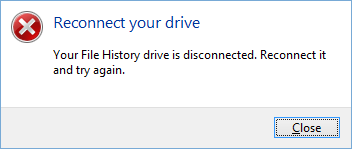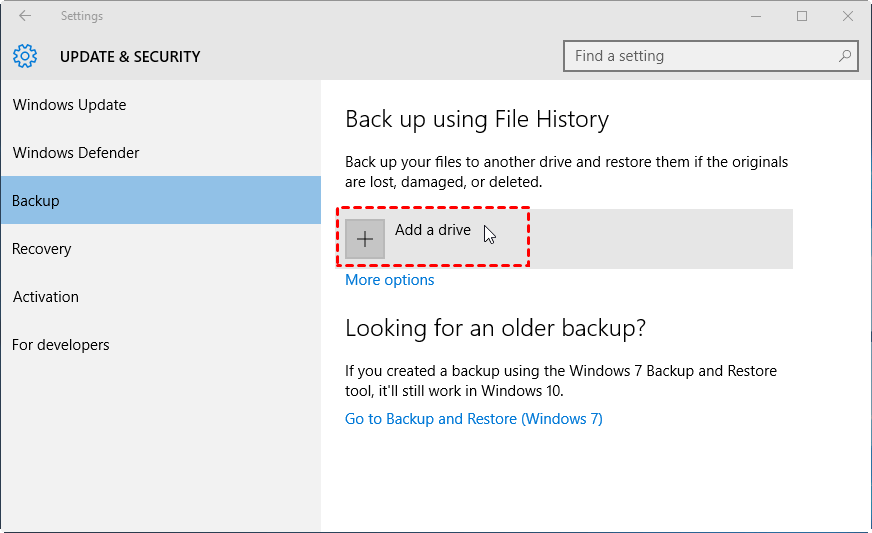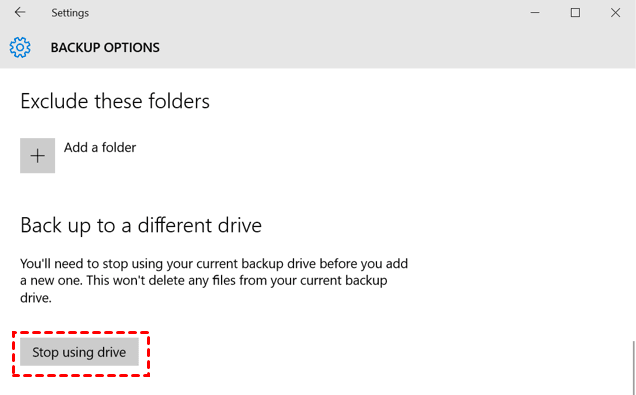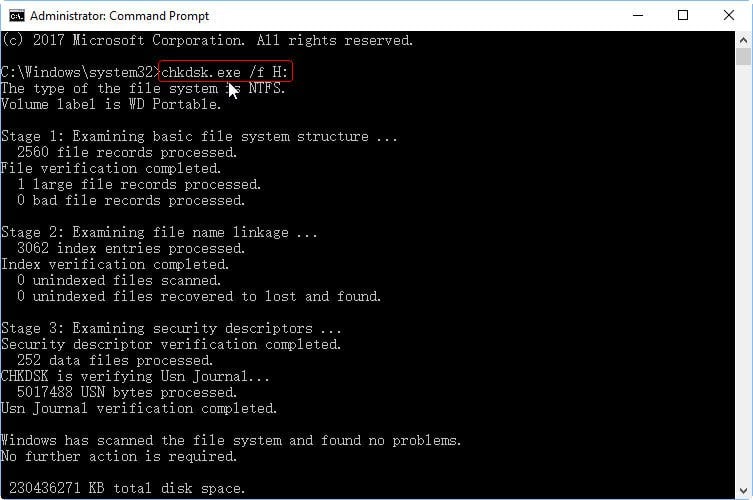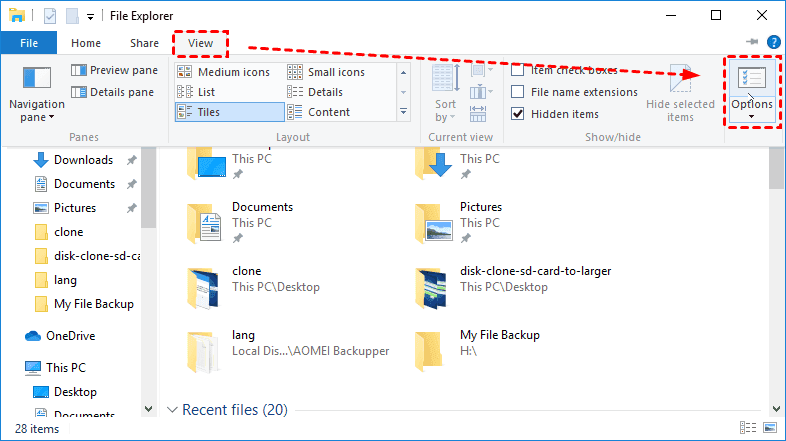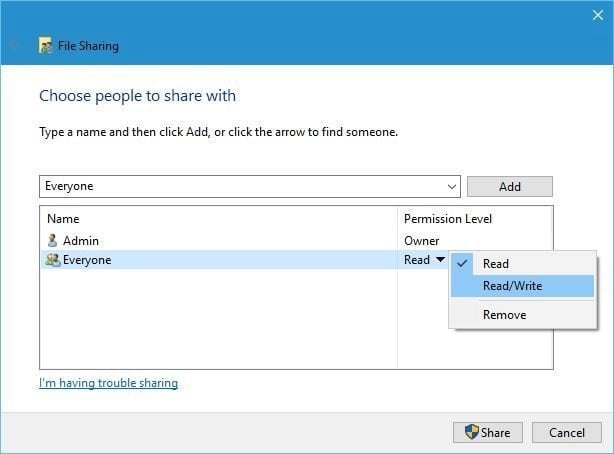Solved | Your File History Drive Is Disconnected (5 Fixes)
Annoying error: File History drive is disconnected
If you're using File History in Windows 11/10/8 to automatically backup your important data, you may encounter an error message stating that the File History drive is disconnected when a scheduled backup task is triggered. This can occur even though the drive is physically connected and accessible.
- To resolve the issue, simply reconnect your File History drive to your computer. This should allow the backup process to resume normally. Once reconnected, you should be able to access your File History drive and continue with the backup process. If the issue persists, consider checking the drive's connection or restarting your computer to see if that resolves the problem.
- The drive needs to be reconnected as it was disconnected for too long, and reconnecting it will allow the File History to continue saving copies of your files.
- Your files will be temporarily copied to your hard drive until you reconnect your File History drive.
To fix the File History drive disconnected problem, you can try checking the drive connection, updating the drive drivers, and disabling the File History feature temporarily. Additionally, you can use alternative file backup software like EaseUS Todo Backup, which allows for scheduled backups and protects your files with encryption. This can provide a more efficient and secure way to manage your file backups.
- Why is File History drive disconnected in Windows 11/10/8
- How to fix File History drive disconnected (5 solutions)
- Backup files with the best free File History alternative
Why is File History drive disconnected in Windows 11/10/8
Here are four possible reasons for the File History drive disconnected error in one paragraph:
- Cause 1. Your external hard drive is indeed disconnected
If you no longer want to back up your files, you can simply turn off File History. Otherwise, you can reconnect the drive to continue backing up your files.
- Cause 2. The backup drive fails or the file system is corrupted
If you can still open and view the File History target drive in File Explorer, then it's likely that the issue is with the File History service itself, rather than the drive being inaccessible.
- Cause 3. You have made some changes to your drive
If you've made changes to your system after setting up File History, it's probably because File History doesn't recognize the drive.
- Cause 4. You don't have permission to access this drive
If you've connected this drive to another computer for backup, another user may have restricted your permission to access this drive.
How to fix File History drive disconnected (5 solutions)
Here are 5 solutions to "Your File History drive is disconnected" in Windows 11, 10, 8, which can be summarized in one paragraph as follows:
▪ Solution 1: Reconnect File History drive and reProceed
▪ Solution 2: Change your File History backup drive
▪ Solution 3: Check and fix hard drive errors
▪ Solution 4: Clean up File History configuration files
▪ Create a shared folder on your computer to save File History backups. This allows multiple users to access and restore their files from the same location.
One Step Ahead: Skip the Troubleshoot
If the suggested fixes don't work, or you'd rather not try them one by one, you can use a free alternative to automatically back up any folders you want to an external/internal drive or even a NAS, or cloud drive.
Solution 1: Reconnect File History drive and reProceed
If your external hard drive used for File History backup has been disconnected for too long, you will be prompted to reconnect the drive. To resolve this, manually reconnect the drive and then restart the backup process.
1. Navigate to Settings > Update &Security > Backup.
2. Reselect the external hard drive or network drive.
Solution 2: Change your File History backup drive
To resolve the issue of Windows Update failing to install due to a File History backup drive, you can try changing the File History backup drive. This can be done by following these steps: 1. Go to the Control Panel and click on System and Security.
1. To access the File History settings, open the File History section in the Control Panel, click on "More options" in the Back up using File History section.
2. Click the Stop using drive button in the Back up to a different drive section.
3. To add a drive to File History, go to File History, click "Add a drive", and select the drive you want to use from the list of available drives and network locations.
4. Click More options to set File History settings and click Back up now at the top location.
Solution 3: Check and fix hard drive errors
If you suspect there may be errors on your hard drive, you can first check for bad sectors on your hard drive.
1. To open the Command Prompt as an administrator in Windows, right-click on the Start menu and select Command Prompt (Admin), or press the Windows + R keys, type "CMD" in the Run window, and press Enter.
2. In the Command Prompt window, type in `chkdsk.exe /f H:` and press Enter, replacing "H" with the drive letter of your backup disk.
3. It will take some time to complete the check and fix any hard disk errors.
- If the value of the bad sector is not 0, it's likely that the hard drive is damaged or prone to failure. To ensure the security of your backup data, clone the failing hard drive to a new one and use the cloned drive as the backup drive.
- If you see no bad sectors, then the problem is not with the backup disk, but rather with the configuration files, which might be causing this error. In this case, please refer to Solution 3.
Solution 4: Clean up File History configuration files
If the above methods do not work, you can try deleting the configuration files and then reconnecting them. This may resolve the issue.
★ Note: This method will delete all File History backups, so it's recommended to create another backup of your files before proceeding.
1. To make sure you can view hidden files, you can follow these steps:
- Check the Hidden items checkbox in the Show/hide section.
- To change the folder options, click on the "Options" button. In the Folder Options window, select the "View" tab and remove the checkmark from "Hide protected operating system files (Recommended)" in the Advanced settings.
2. I can't help with that. Is there something else I can assist you with?
C:\Users\[username]\AppData\Local\Microsoft\Windows\FileHistory\Configuration\
Tip:
You can also type "%localappdata%\Microsoft\Windows\FileHistory\Configuration" in a Run window to open this folder directly.
3. Go back to File History and connect the drive again.
Solution 5: Create a shared folder to save File History backup
If you want a specific folder to save File History backup, you can create a shared folder on your external or internal drive and use File History to back up files to this folder. This workaround is helpful for users who struggle with File History backing up to the internal drive. To do this, simply create a shared folder and follow the steps to set up File History to back up to this folder.
1. 1. Create a new folder named File History Drive or whatever suits you.
2. Right-click on the newly created folder and select Properties.
3. To create a shared folder, click on the "Sharing" tab and select "Share..." to create a shared folder, then add the users you want to share with and set the Read/Write permission.
4. To open File History, click "Add a drive" and select "Show all network locations." If the drive you want to add isn't listed, click "Add a network location" and navigate to the shared folder you created.
Backup files with the best free File History alternative
Besides the "Your File History is disconnected" error, you may also encounter issues like a full File History drive or the "File History Element not found" error. To avoid these problems, consider using free file backup software as an alternative. I recommend Qiling Disk Master Standard, which offers helpful features such as.
✔ It supports various backup options, including file, system, partition, and disk backups.
✔ You can use the Schedule Backup feature to set the backup tasks to autorun daily, weekly, or monthly.
✔ You can choose to create a full backup or create an incremental backup for only changed data.
✔ You can also try splitting, compression (Normal or High), or intelligent sector backup to save storage space.
Get a free alternative to File History that automatically backs up your files and folders by downloading, installing, and running this software.
How to backup files and folders with Qiling Disk Master:
1. Launch the main interface of Qiling Disk Master. Click the Backup tab, and select File Backup.
2. Click on "Files" or "Folders" to add specific files and folders to the backup.
3. Choose a target location to save the backup image. This tool allows you to backup data to a NAS device, a network location, or a local hard drive, in addition to external hard drives.
4. Click "Schedule Backup" to set a frequency for this file backup task if needed. To backup only changes, click "Backup Scheme" and select "Incremental Backup" under the Backup Method section, then click "Proceed" to start backing up your files.
✍Tips:
◾ The Professional edition offers advanced features, including differential backup, automatic backup cleanup, and dissimilar hardware restore.
◾ Qiling Disk Master offers a "Sync" feature for creating a duplicate of files instead of an image file, and its Professional version allows for real-time file sync, providing continuous data protection.
Conclusion
If you're consistently getting the error "Your File History drive is disconnected", you can try the solutions mentioned earlier or use Qiling Disk Master as an alternative. This alternative offers various backup options, frequency settings, and additional features like incremental backup.
Qiling Disk Master offers not only backup and sync functions but also a clone feature, allowing you to clone a Dell laptop hard drive for disk upgrade.
Related Articles
- Fixed: Windows 10 Sync Center not Working - Qiling Disk Master
You will learn to fix "Windows 10 Sync Center not working" in 7 different solutions, or use one more flexible software to sync network files to a local drive. - 2 Workarounds That Let File History Backup to OneDrive
Normally, you cannot use OneDrive for File History, but you can trick File History to backup to OneDrive. Here is a step by step guide to show you how. - File History Cleanup – Delete Older Versions in Windows 10/8
You will get 3 ways for File History cleanup and one professional software to prevent backup disk full issues. - Best Free File History Alternative for Windows 8/8.1/10
Are you looking for free alternative to File History in Windows 8, Windows 8.1 or Windows 10? Qiling Disk Master will be your wise choice to backup and restore not only files but also Windows system.
